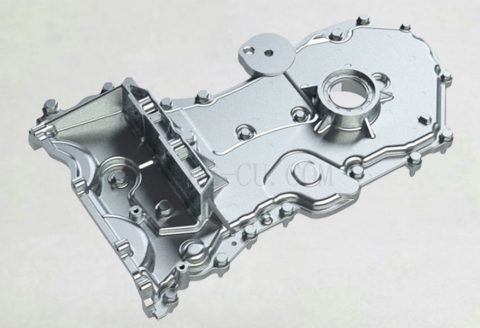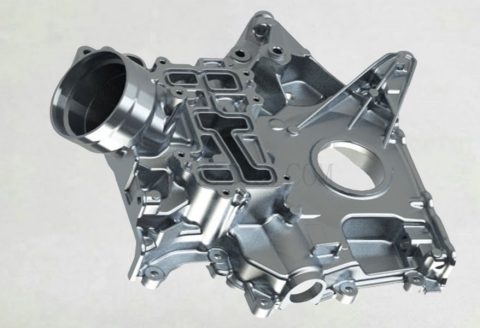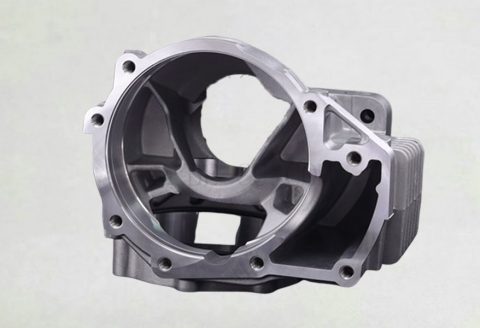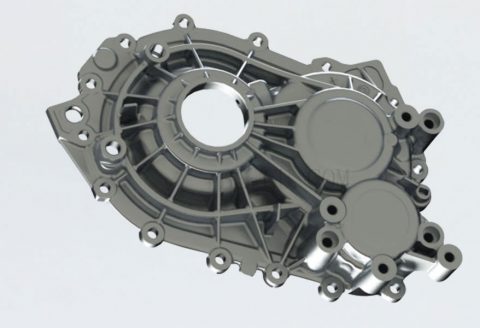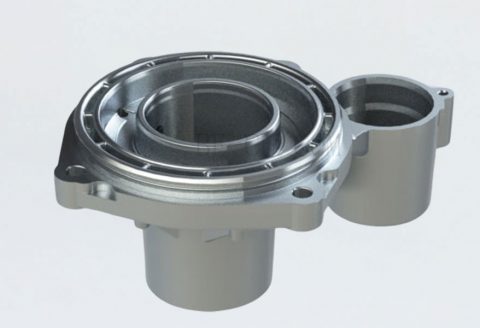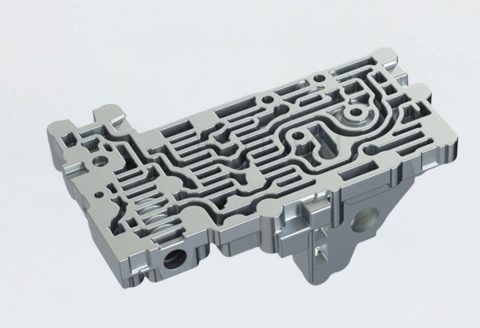Cold Chamber Die Casting
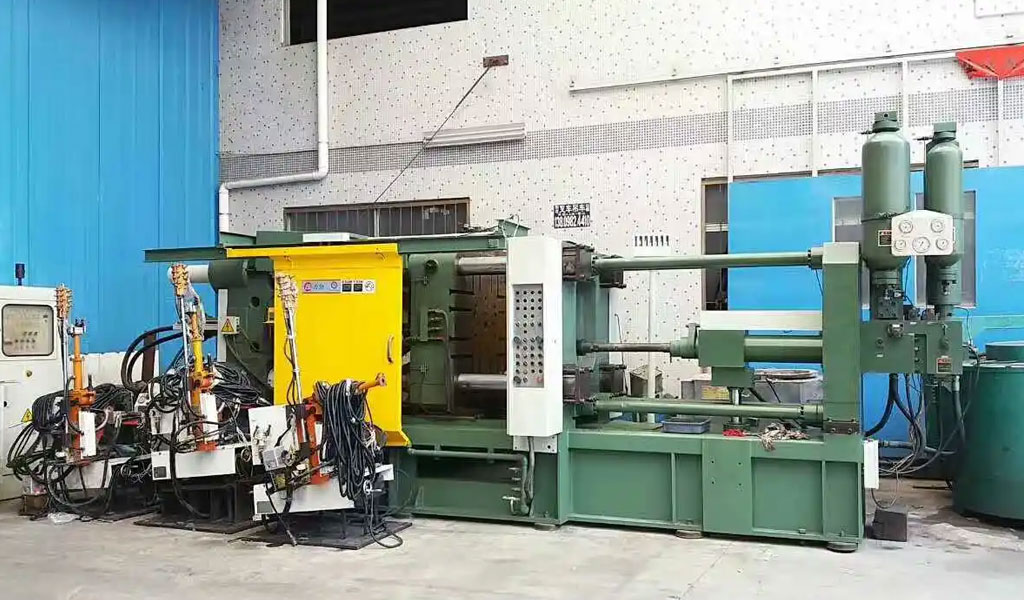
Cold Chamber Die Casting Services & Parts Supplier – China Cold Chamber Die Castings Manufacturer
If you focus on the high melting temperature and denser of metal castings, cold chamber die casting are where you can go. Cold chamber die casting machine refers to a type of die casting machine in which the injection chamber and the injection punch are not immersed in the molten metal, but a quantitative amount of molten metal is poured into the injection chamber and then injected.
Pintejin cold chamber die casting services can reduce the processing time and cost of parts, as we can manufacture a large number of prototypes in batch quickly and modify the appearance with die casting techniques to deliver the final desired parts. Whether you want to look for an cold chamber die casting manufacturer casting aluminum, Magnesium, or copper, professional technicians will perform cold chamber die casting process with a wide variety of metals, and be able to offer complex detail, smooth surface finish, and high definition in an economic way for clients. Our cold chamber die casting parts are used across broad fields, such as energy, automotive, gas, and oil, food, etc. ISO 9001 certification and multiple-stage quality inspection implementation will ensure the quality and performance of the cold chamber die casting products to be delivered.Contact Pintejin Die Casting for our Cold Chamber Die Casting Services or Request a Quote today.
Why Choose Our Cold Chamber Die Casting?
- Close design review on tolerances, undercuts, and more details for higher production yields and lower cost.
- If CNC services are required, advanced equipment and extensive experiences will work on less budget and time.
- From concept to prototype to end-use products, our experts will help you with an advantage of speed and reliability.
- Metal surface finishing, quality assurance testing, and more services can be provided to make the castings fit specifications.
- Full-service Cold Chamber Die Casting factory and high automation reduces the time of each step, ensure the shortest lead time.
Materials Used in Cold Chamber Die Casting – Types of Cold Chamber Die Casting
Cold Chamber Die Casting is designed to handle metal alloys with a high melting point. Commonly used alloys in the Cold Chamber Die Casting are,
- Aluminum
- Magnesium
- Copper etc.
Although Zinc can be cast with a hot-chamber machine, there are some Zinc alloys with a large percentage of Aluminum. It causes the melting temperature to increase and may require a cold-chamber machine instead.Any other metal with a high enough temperature will require a Cold Chamber Die Casting machine as well. Which metal alloy you will need should be based on your quality requirements. We would recommend Aluminum alloys as a versatile, durable, and economic choice.

The Pintejin Case Studies Of Cold Chamber Die Castings
Pintejin Casting fabrication services are available for both design to reality and low to high volume production runs of your die casting parts and more.
The Development History Of Cold Chamber Die Casting Machine
The development of die casting technology has a history of more than 150 years. Compared with the traditional and ancient casting technology, it can only be said to be a young craft technology. However, due to the many characteristics of die-casting technology, the application field of die-casting parts is expanding day by day, covering various industrial categories, so the development speed is very amazing and has received widespread attention.
Die-casting machine is an important basic technical equipment in die-casting production, and the mutual existence and interaction with die-casting process is very prominent. The improvement of die-casting process or the adoption of new technology must have corresponding or new type of die-casting machine as technical support. Therefore, in the development process of die-casting technology, die-casting machine always plays an important role and plays an active and direct role in promoting.
Die casting technology originated from the type casting technology of the printing industry. According to literature reports, at the beginning of the 19th century, the world printing industry flourished, and the demand for movable type (single-letter type) was increasing, so the type casting machine
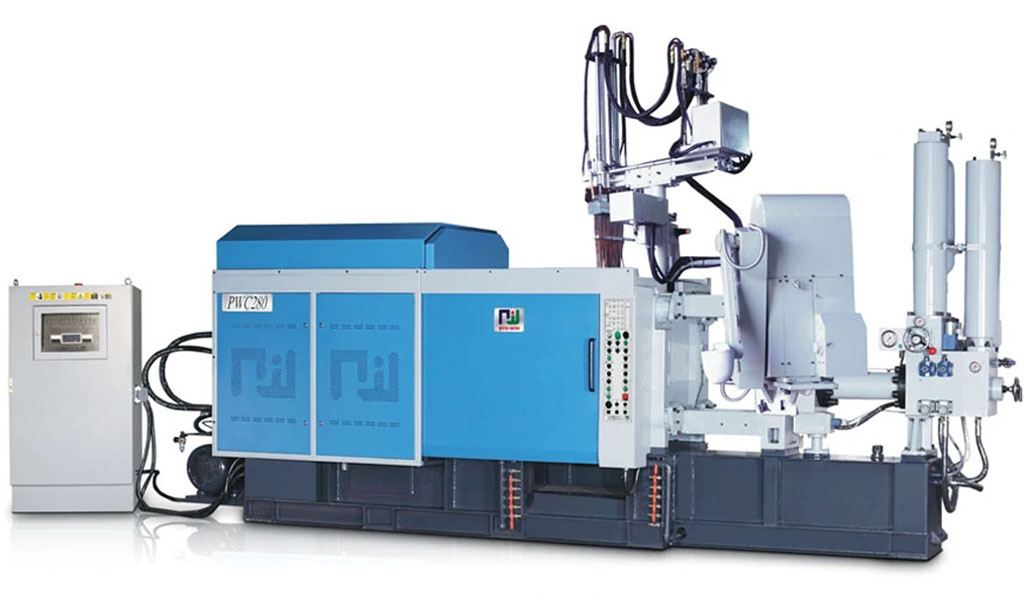
Emerged as the times require, the earlier casting machine was made in 1805 by William Wing in the United States. In 1822, William Church of the United States made a type casting machine with piston injection. Later, in 1838, American David Bruce made a new type casting machine, which was more efficient in production, and soon spread in the world, which lasted until the middle of the 19th century.
The earliest cold-chamber die-casting machine can be traced back to 1920. It was first invented and manufactured by Carl Roehri. This cold-chamber die-casting machine is separate from the furnace and the machine. When the molten metal in the furnace is poured into the pressure chamber by hand ( After that, there is a punch to inject the molten metal into the mold, and then, at the same time as the casting is ejected, the residual cake formed by the excess metal in the press chamber is taken out together with the casting. It can be seen that, even by current standards, this is exactly the process of one working cycle of a typical cold chamber die casting machine. With continuous research and testing, it is found that the cold chamber die casting machine is not only suitable for die casting of aluminum alloy and magnesium alloy, but also suitable for die casting of copper alloy. Also, it is possible to produce large and complex zinc alloy die castings. After a series of improvements and changes, cold chamber die casting machines are divided into two types: vertical cold chamber die casting machines and horizontal cold chamber die casting machines.
The vertical-chamber cold-chamber die-casting machine is placed vertically, obviously following the hot-die-casting machine. The typical and mature vertical cold-chamber die-casting machine was invented by Czech engineer Josef Polak in 1927. . It was originally developed for the die casting of copper alloys, but was later found to be equally applicable to die casting of aluminum alloys and magnesium alloys. Since then, this kind of machine has been popular in Eastern Europe for more than 30 years. However, due to the inconvenience of automatic feeding, relatively low production efficiency and time-consuming maintenance, it is also very difficult to develop into a large scale. gradually decreases. However, since the biggest feature of this vertical cold chamber die casting machine is that it can open a central gate, it still retains its due position in individual occasions. As for the other vertical cold-chamber die-casting machine, the die-casting machine has a structure of opening and closing the die up and down. The pressure chamber is placed in the lower die, and the molten metal is injected into the die from the bottom. Location.
The horizontal cold chamber die-casting machine has been developed and manufactured in the early 1920s. Because of its many advantages, especially the procedure of one working cycle is simpler than that of the vertical cold chamber die-casting machine, it has been improved for more than ten years. And gradually become stereotyped, widely spread in Europe and the United States.
Since the Second World War, it has become a typical model for die-casting production of aluminum alloys, magnesium alloys and copper alloys. Because the horizontal cold chamber die-casting machine shows great advantages in large-scale, unitized, integrated, automated, etc., and the horizontal cold chamber die-casting machine is suitable for the die-casting of non-ferrous metals such as zinc, aluminum, magnesium, copper, etc. Applicable, and also suitable for die casting of ferrous metals, therefore, in the development process of die casting machines, it has always occupied a dominant position.
Automated Die Casting Machines And Die Casting Cells
With the rapid development of large-scale die-casting, the trend of automation is imminent. It is true that automation is equally important for small and medium-sized die-casting machines. Therefore, the need for automated die-casting machines for automated die-casting production is quickly put on the agenda. The main components of the initial automatic die-casting machine are: with the host as the core, equipped with three devices such as pouring, spraying, and picking up parts, and sometimes a trimming machine, and then linking the operations of related procedures to realize the automation of the die-casting production process. In 1964, KUX company proposed the problems that should be solved in the realization of automation. In addition to the three manipulators of the die-casting machine mainframe, other equipment and problems should also be considered, including: preventing metal splashing on the parting surface, and the mold clamping process. Safety, mold blowing and spraying, removal method of die castings, water cooling of die castings and placement on conveyor belts, operating procedures, production efficiency, construction of machines, capacity of holding furnaces and metal transport, trimming of die castings, Wait, that’s basically what a die casting unit requires.
Around the mid-1960s, robots began to be used in the die-casting industry, which greatly promoted the development of automated die-casting machines. American Allen Stevens became one of the earliest die-casting plants that used robots in die-casting production. Toshiba introduced the progress of Japan’s development of automatic die-casting machines in 1970. It is said that the test of fully-automatic die-casting machines in Japan started in 1961, but the structure of the die-casting machines at that time could not meet the requirements of automation. The industrial matching problem has not been solved, but in less than 10 years, Japan has an automated die-casting machine. In the 10 years of the 1970s, the demand for automatic die-casting machines by die-casting manufacturers increased day by day. Some companies, such as SouthernDie Casting & Engineering, not only made suggestions on the automation equipment of die-casting machines, but also believed that good molds must be equipped. In order to reflect the advantages of die casting automation. In addition, Europe has also accelerated the pace of adopting automatic die-casting machines. In 1983, Weingarten introduced the production of 4-cylinder cylinder blocks on a 2,500 t-class die-casting machine. At that time, this die-casting machine had adopted digital control, while focusing on The automatic production of automatic die-casting machine is comprehensively described. It can be seen that during this period, the automation of die-casting production and the establishment of flexible units have become new global topics in the die-casting industry.
The completeness of the above configuration is related to the die-casting process and technical requirements of the product, as well as the size of the model. In addition, each die-casting unit is an independent working body. When a workshop is composed of die-casting units, it becomes an automatic die-casting production line without operators. At this time, the two end-to-end processes of feeding and conveying the finished die-casting parts can also be connected to each other into a transportation line to make the workshop more tidy. Since the core of die-casting production automation is the die-casting machine host, the development of die-casting units and die-casting automated production lines has become an important part of the development of die-casting machines.
After the 1960s, various industrial technologies such as hydraulic technology, automation control technology, electronic computer technology, detection technology, metallurgical technology, material engineering, chemical technology, etc. developed rapidly, and new industrial products were also changing with each passing day. Technology is also advancing rapidly in tandem. Under the background of this era, the most powerful technical foundation must be created for the development of die-casting production technology. Through the application of various technologies, the automatic die-casting machine will be increasingly perfected. When the automatic die-casting machine is the core, it is equipped with various auxiliary devices and peripheral equipment, and it is operated according to the predetermined program to form a die-casting unit. Auxiliary devices usually configured on horizontal cold chamber die casting machines include: pouring, mold cleaning and spraying, pressure feeding of lubricants, picking, preheating and placing casting inserts, punch and chamber lubrication, injection parameter testing , injection process monitoring, clamping force detection, automatic pull-out and reset of large bars, machine motion pair lubrication, pressure liquid level position and temperature display, fault diagnosis and alarm, quick mold change, safety guardrail, etc., some will spray, One manipulator is used for 2 or 3 devices of picking up and placing inlays, etc. Peripheral equipment refers to: holding furnace, melting furnace, adding and transporting molten metal (or ingot blocks), and casting inlays Heating of parts, cooling of die-casting parts after mold release, instant and simple detection of defective parts of die-casting parts, trimming of die-casting parts, shot peening or polishing of die-casting parts, transfer of die-casting parts between processes and finished products, smoke extraction, etc.; when the die-casting process When necessary, configure the mold temperature control device, vacuum device, punch with sealing ring and its associated pressure chamber, local pressure device, etc. At this time, the host operating program should have a control function connected to it.
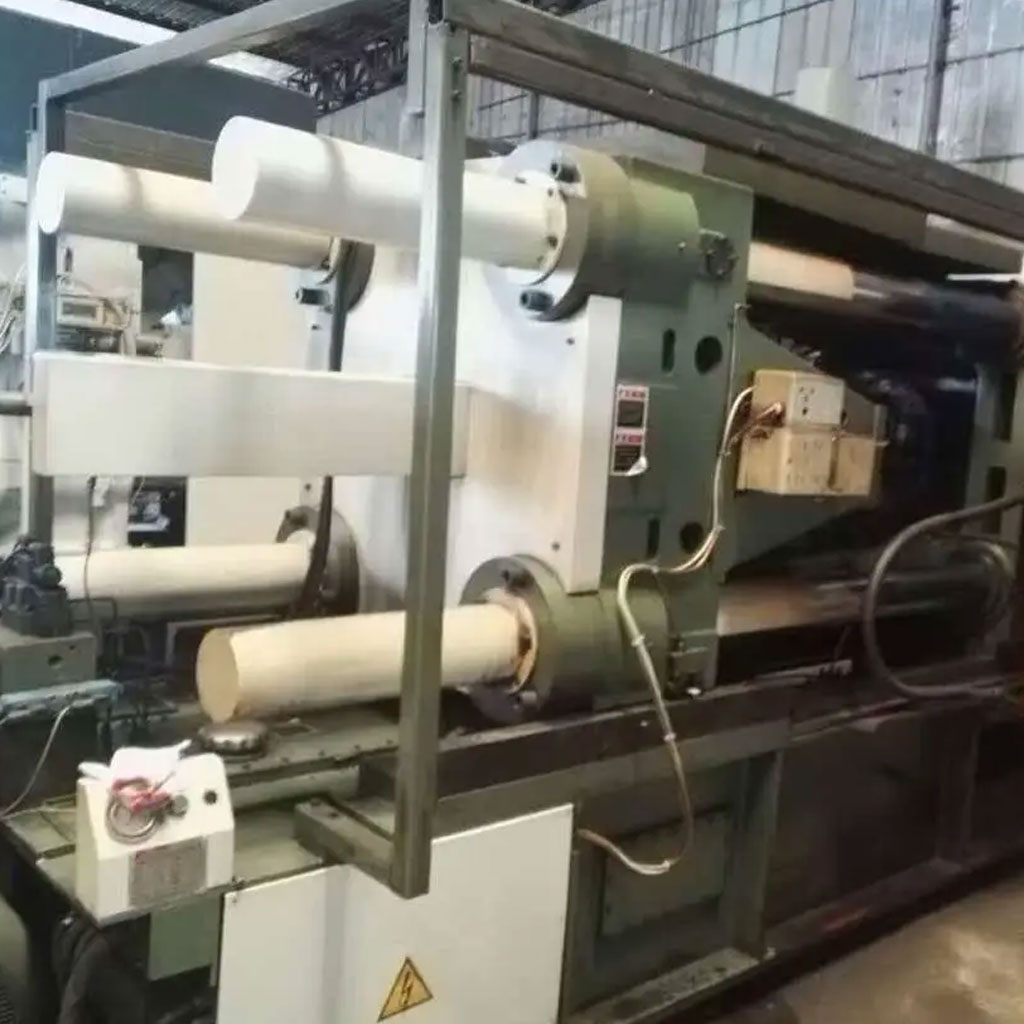
Contact Pintejin Die Casting for Cold Chamber Die Casting Today
If the requirements of your parts will be met by cold-chamber Aluminum Die Casting Manufacturer, you are better off sacrificing slightly faster cycle time to ensure better economy, quality, and durability for your parts.Contact Pintejin today or request a quote to get your project started by a team of experts today.
Pintejin is your premier manufacturing source for die casting and machining since 1995.
